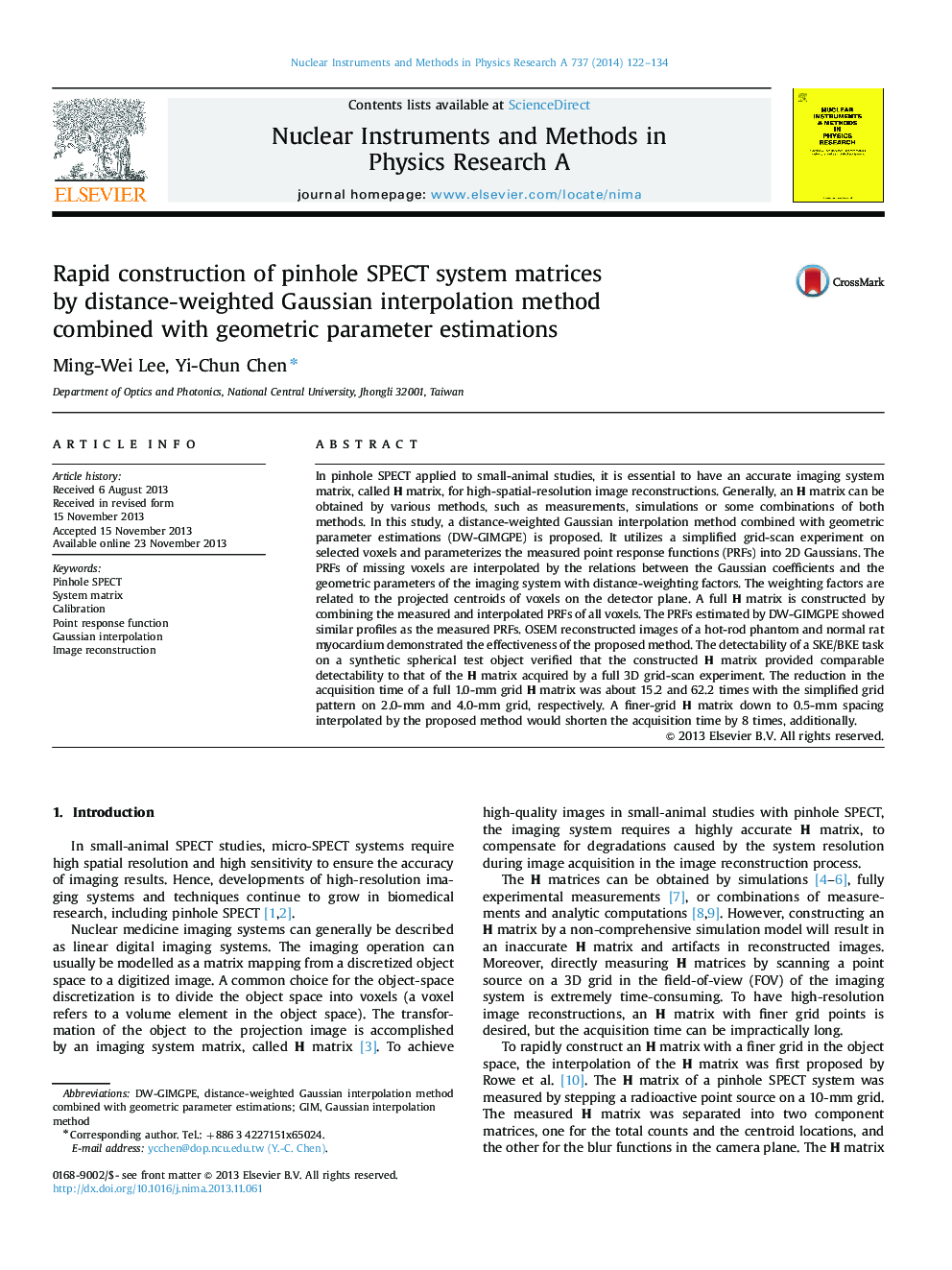| Article ID | Journal | Published Year | Pages | File Type |
|---|---|---|---|---|
| 8177729 | Nuclear Instruments and Methods in Physics Research Section A: Accelerators, Spectrometers, Detectors and Associated Equipment | 2014 | 13 Pages |
Abstract
In pinhole SPECT applied to small-animal studies, it is essential to have an accurate imaging system matrix, called H matrix, for high-spatial-resolution image reconstructions. Generally, an H matrix can be obtained by various methods, such as measurements, simulations or some combinations of both methods. In this study, a distance-weighted Gaussian interpolation method combined with geometric parameter estimations (DW-GIMGPE) is proposed. It utilizes a simplified grid-scan experiment on selected voxels and parameterizes the measured point response functions (PRFs) into 2D Gaussians. The PRFs of missing voxels are interpolated by the relations between the Gaussian coefficients and the geometric parameters of the imaging system with distance-weighting factors. The weighting factors are related to the projected centroids of voxels on the detector plane. A full H matrix is constructed by combining the measured and interpolated PRFs of all voxels. The PRFs estimated by DW-GIMGPE showed similar profiles as the measured PRFs. OSEM reconstructed images of a hot-rod phantom and normal rat myocardium demonstrated the effectiveness of the proposed method. The detectability of a SKE/BKE task on a synthetic spherical test object verified that the constructed H matrix provided comparable detectability to that of the H matrix acquired by a full 3D grid-scan experiment. The reduction in the acquisition time of a full 1.0-mm grid H matrix was about 15.2 and 62.2 times with the simplified grid pattern on 2.0-mm and 4.0-mm grid, respectively. A finer-grid H matrix down to 0.5-mm spacing interpolated by the proposed method would shorten the acquisition time by 8 times, additionally.
Related Topics
Physical Sciences and Engineering
Physics and Astronomy
Instrumentation
Authors
Ming-Wei Lee, Yi-Chun Chen,
